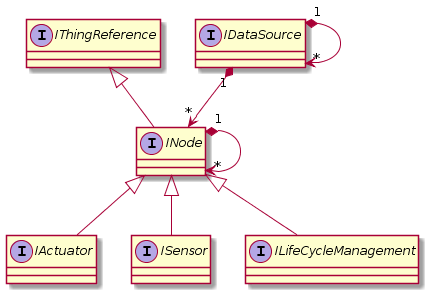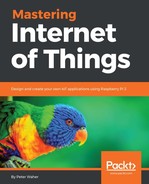The IoT Gateway implements a dynamic concentrator, where individual nodes can optionally be registered and provisioned. Management of nodes is done through the XMPP interface. It can be performed using the simple IoT client for instance.
Waher.Things defines the basic abstraction model for things in the gateway. Each node (INode) can have a parent and a set of children, forming a tree structure of nodes. Nodes reside in a data source (IDataSource). Data sources also form a tree structure. A node is considered a thing and is referenced (IThingReference) through the triple Node ID, Source ID, and Partition. Controllable nodes are called actuators (IActuator) and readable nodes sensors (ISensor). These interfaces, and how they are used to read data, perform control operations, and define displayable parameters, were introduced in the previous chapter. If the node should be able to support registration in a Thing Registry, and requires decision support from a Provision Server, it should implement ILifeCycleManagement:

